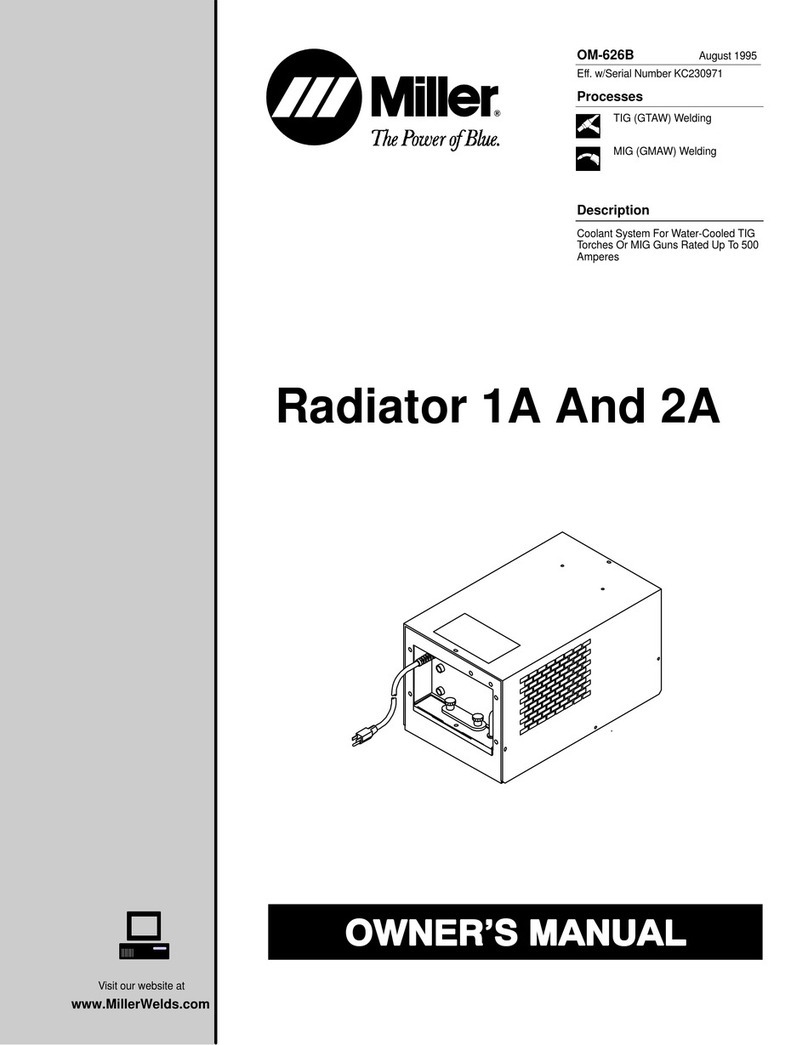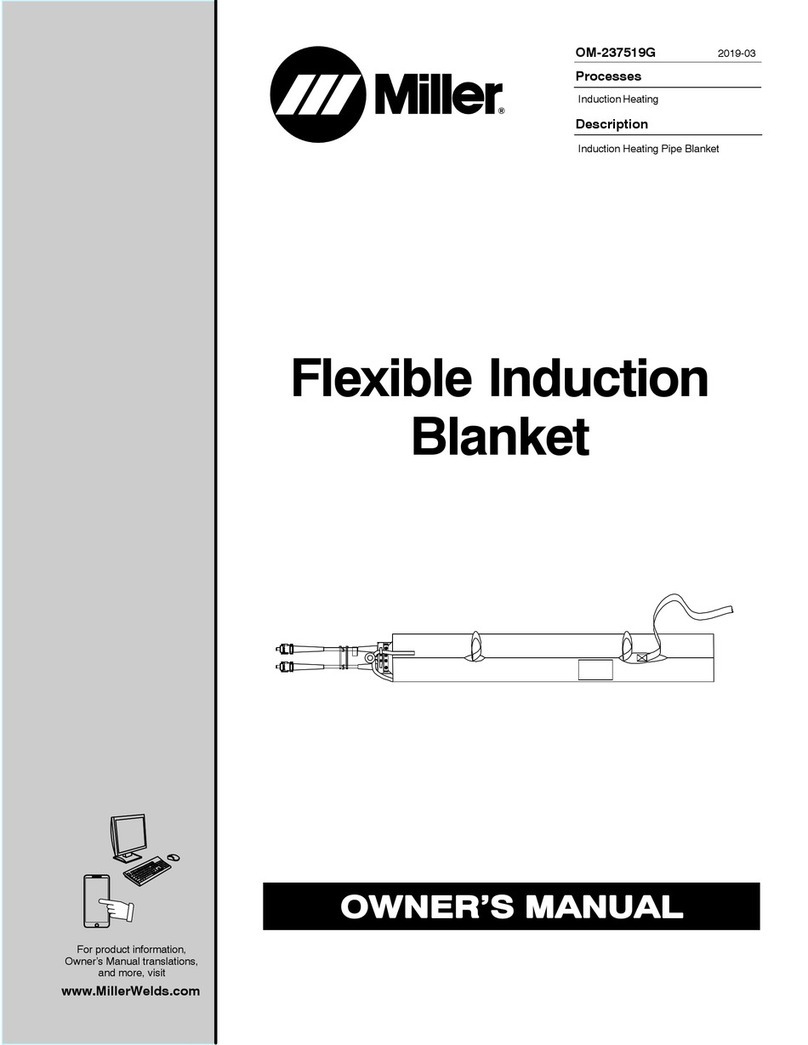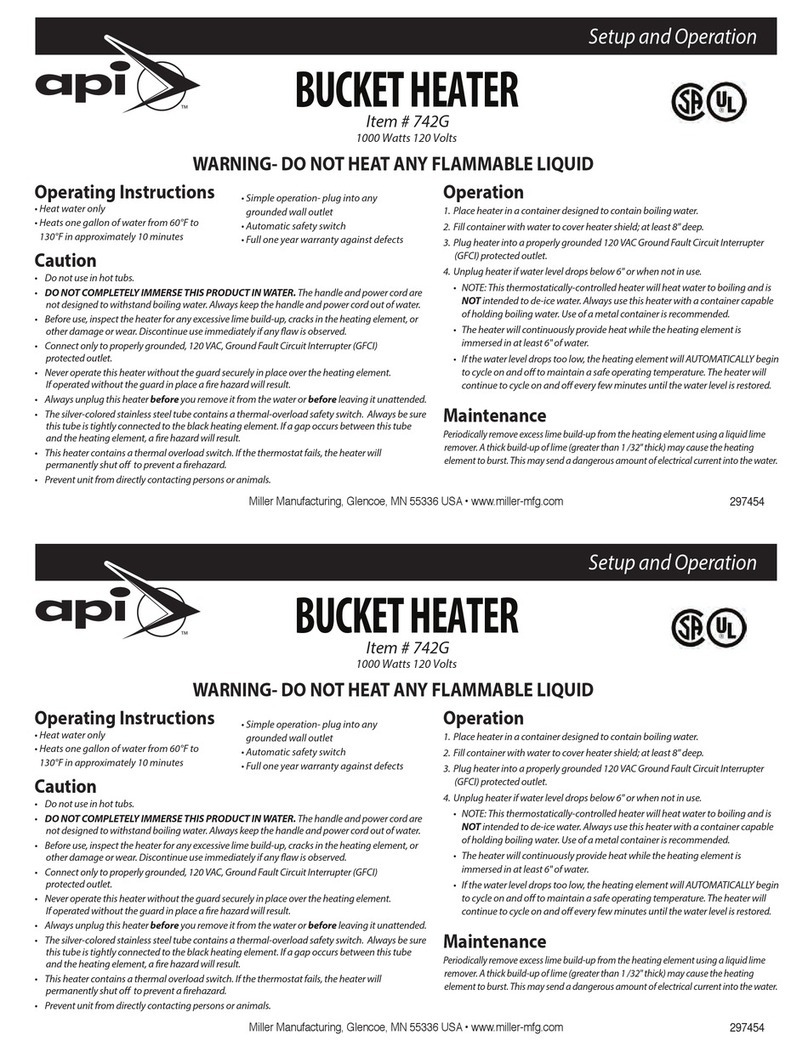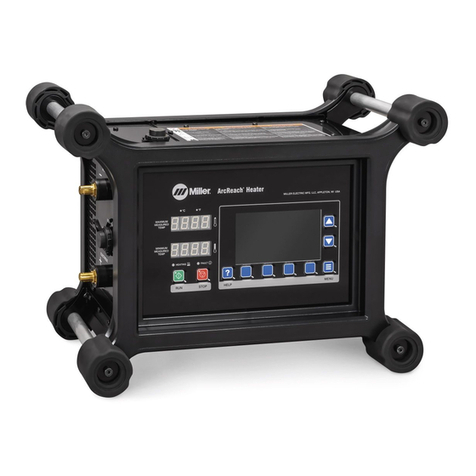
a. Secure preheat cover wrap around the air-cooled cable.
This does NOT act as a layer of insulation but protects
from jobsite abrasion and weld spatter.
b. Put a piece of berglass tape or clearly identify the middle of
the cable with the wrap on to make the cable wrap process
more efcient.
c. Locate the center of the heating cable.
d. Route the center of the cable over the top of the pipe, and pull it
through underneath to start the rst turn. Route the cable over the
top of the pipe again, working toward the joint to start the second
turn. If there is enough cable, a third wrap can be added by routing
the center of the cable over the top of the pipe again.
e. Once the desired number of turns are applied, route the outer
loose ends of the cable through the center loop a few times each
(depending on the loop length) to bring the leads together.
f. Twist the remainder of the leads together from the coil to the TC
Extension Cable to cancel the magnetic eld between them and
minimize incidental heating of nearby metal objects.
ArcReach®Heater
6
Step 06.
Apply the appropriate heating
tool — either air-cooled cables
or air-cooled quick wrap.
a. If insulation is being used, apply the heating tool over the insulation.
b. To decrease heating time, place the heating tool closer to the
weld joint.
c. Insulation can be secured in place with a non-conductive strap
or tape such as berglass reinforced tape. Do not use metal
straps or wire.
NOTE:
A typical air-cooled cable induction coil will have 2 – 3 turns on each side of the joint. Pipe diameters larger than 24"
will usually require two separate heaters depending on target temperature and time-to-temp requirements.
If using TC probes, position them under the insulation (under the heating cable) in direct contact with the workpiece.
This is an example of a typical air-cooled coil on small-diameter pipe using a single heating cable.
Steps for proper air-cooled cable application:
HAZARDOUS VOLTAGE; ELECTRIC SHOCK can kill.
Do not use wire or metal straps to secure cable. Instead, use
plastic cable ties, tape, or non-conductive straps to secure cable.
Do not hang cable on metal brackets, hangers, or other
mechanisms.
Stop using equipment if plug, receptacle, or cable is damaged.
Replace cable if braid, red jacket, or bare wire is visible.
Read and follow all labels and the Owner’s Manual carefully.
DANGER
Do Not Remove, Destroy, Or Cover This Label.































